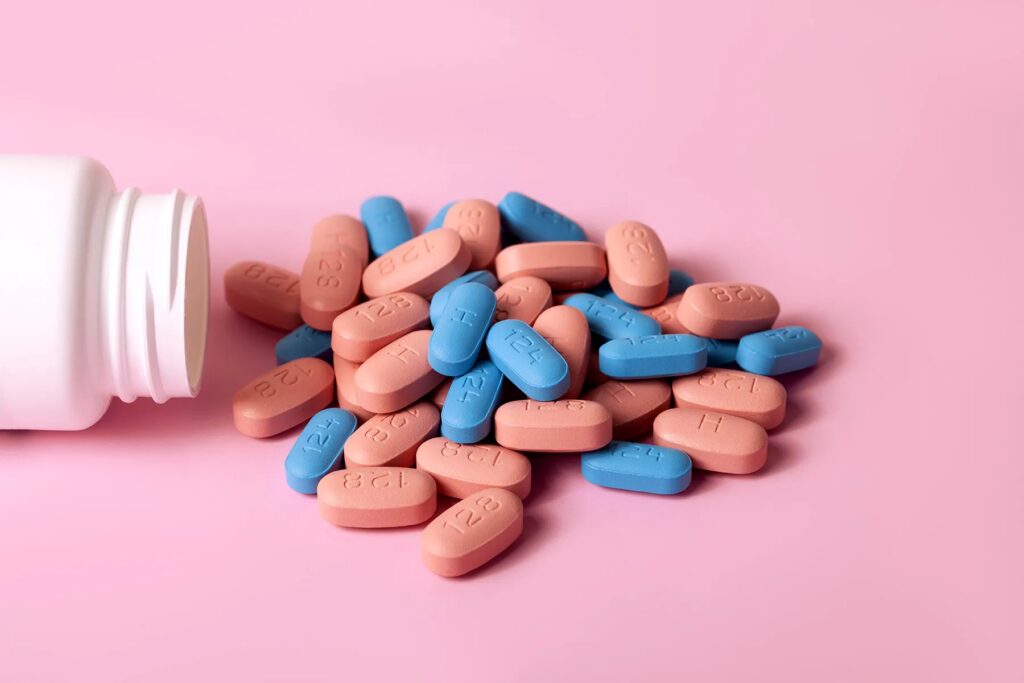May 2, 2023 — Lizzy P., a 77-year-old retired nurse from Delaware, has been taking Adderall for about 10 years.
“The doctor started me on it for many reasons,” she said. “I get tired easily — it’s a stimulant, so he thought it would help me keep alert since I was driving long distances at the time. I also have severe depression and he thought it might help with that as well.”
Lizzy takes five other medications. Two are for “physical” issues: She takes Synthroid (levothyroxine) to boost thyroid hormones and Norvasc (amlodipine) for her high blood pressure.
“The rest are for emotional and mental issues,” she said. “I take Lexapro [escitalopram], an antidepressant which I’ve been on for decades; I take Valium [diazepam] for anxiety or when I have trouble sleeping; and I take an opioid, Vicodin [hydrocodone], for arthritis pain.”
Lizzy doesn’t want her full name revealed in this article. “I live in a retirement community where some of the people can be nosy, and I don’t want them to know all my health issues and to gossip,” she says. “And it’s embarrassing because I sometimes find it confusing to be taking so many pills. Often, it’s hard to keep all of them straight — what I’m taking and when I’m supposed to be taking it.”
‘High Potential’ for Abuse
Lizzy is typical of an increasingly common trend: U.S. adults who take a stimulant medication, together with other drugs that target the central nervous system, such as antidepressants, opioids, and anti-anxiety medications—according to a new study published in the journal BMJ Open.
The drugs are “the old amphetamines and methylphenidate [Ritalin],” which are schedule II controlled substances, said lead study author Thomas J. Moore, faculty associate in epidemiology at Johns Hopkins Bloomberg School of Public Health and Johns Hopkins Medicine in Baltimore. These medications have been around and in use for 85 years.
According to the U.S. Drug Enforcement Administration, amphetamine and methylphenidate are considered “dangerous” because of their high potential for abuse. They also have a high potential for physical or psychological dependence.
The FDA approved these stimulants to treat attention deficit hyperactivity disorder in children and adults, but they also have been used to treat nasal congestion, narcolepsy, binge eating, depression, and senile behavior and have been used as an appetite suppressant, the authors said. And they’re increasingly being used “off-label” — meaning they are used to treat conditions they were not approved for, Moore said.
Moore and colleagues had previously studied prescribing trends of stimulants and found a 79% increase in use of these drugs from 2013 to 2018. The researchers wanted to explore how these stimulants are being used and, in particular, they wanted to know what types of other medications were being taken at the same time.
Use the Lowest Dose for the Shortest Period
Moore and his team looked at prescription drug claims from a large commercial insurance claims database for over 9.1 million adults (aged 19-64) from 2019 to 2020.
They found that 3% of the people in the database (276,223 people) had used a schedule II stimulant in 2020. Of these, 45.5% were also taking a central nervous system drug. Almost a quarter (24.3%) were simultaneously using two or more of those drugs.
The drugs most commonly co-prescribed were antidepressants, anti-anxiety medications, and opioids. Close to half (47.6%) of the stimulant users also took an antidepressant, while close to a third (30.8%) filled prescriptions for anxiety/sedative/hypnotic meditations, and a fifth (19.6%) received opioid prescriptions.
Other medications included anticonvulsants, which are sometimes used for mood stabilization (14%), antipsychotics (8%), and other stimulants (2%).
Most patients using these drugs become “long-term users” once treatment had started, with three-quarters of patients continuing to take them during the 1-year study period.
There isn’t much research examining these types of combinations, so the “advantages and additional risks” of taking them together “remain unknown,” Moore said.
He warned that amphetamine stimulants in adults “should be used at the lowest dose that produces results for as short a period as possible and monitored closely by your prescribing health professional.”
Complex Prescribing Regimens
These new findings “call for research to increase our understanding of the clinical contexts that motivate these complex prescribing regimens as well as their effectiveness and safety,” said Mark Olfson, MD, MPH, professor of psychiatry, medicine, and law, and professor of epidemiology at Columbia University Irving Medical Center in New York City.
Lizzy agrees. “Sometimes, it feels like the doctors have just been ‘throwing darts at a board’ and hoping something will hit the right target. Unfortunately, I still have some depression and anxiety, even though I’m taking this complicated cocktail of drugs,” she said.
In the meantime, Lizzy plans to consult her psychiatrist and ask if he can review the regimen. “Maybe we can experiment with tweaking it and cutting out one or more of the meds and seeing if I really need it. That would simplify things and might even improve my symptoms.”

